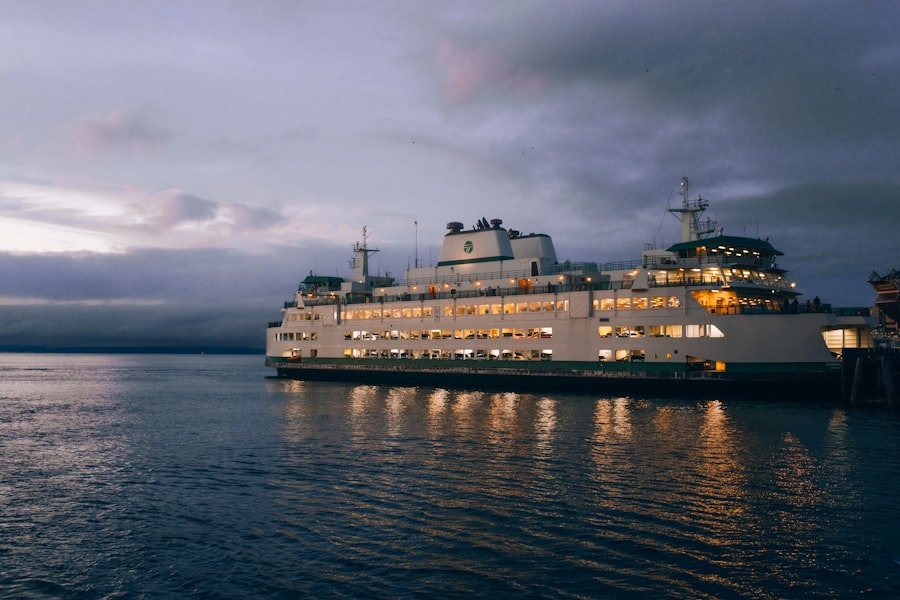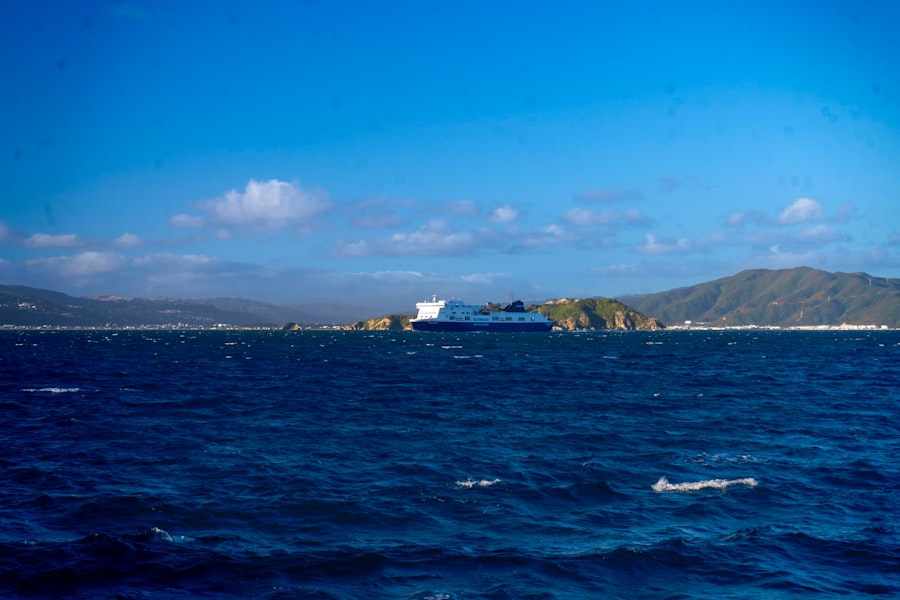The Drake Passage, a body of water situated between the southern tip of South America and Antarctica, is renowned for its tumultuous seas and breathtaking vistas. Spanning approximately 600 kilometers (370 miles), this passage serves as a critical maritime route for vessels traveling to and from the Antarctic region. The waters are characterized by their unpredictable weather patterns, strong currents, and the confluence of the Atlantic and Pacific Oceans.
This unique geographical location not only makes the Drake Passage a vital thoroughfare for shipping but also a fascinating area for scientific research and exploration. The passage is named after Sir Francis Drake, the English explorer who was the first to navigate these waters in the late 16th century. The Drake Passage is often described as one of the most challenging maritime routes in the world, with its notorious reputation for rough seas and sudden storms.
Despite these challenges, it remains a popular destination for adventure seekers and nature enthusiasts eager to experience the raw beauty of the Southern Ocean and the pristine landscapes of Antarctica.
Key Takeaways
- The Drake Passage is a narrow body of water between South America’s Cape Horn and the South Shetland Islands of Antarctica, known for its rough seas and challenging sailing conditions.
- The Drake Passage has a rich history of exploration and discovery, with famous expeditions by explorers such as Sir Francis Drake and Charles Darwin.
- Cruising the Drake Passage presents challenges such as rough seas, strong winds, and potential seasickness, making it important to choose the right cruise and be prepared for the journey.
- When choosing a cruise for the Drake Passage, consider factors such as the size and stability of the ship, the itinerary, and the level of comfort and amenities offered.
- Preparing for the journey through the Drake Passage involves packing appropriate clothing, being mentally prepared for the conditions, and understanding the potential wildlife and natural wonders that can be experienced.
The History of the Drake Passage
The history of the Drake Passage is steeped in exploration and discovery. Long before European explorers ventured into these waters, indigenous peoples inhabited the regions surrounding the passage, utilizing its resources for sustenance. The first recorded European to navigate the passage was Sir Francis Drake in 1578, during his circumnavigation of the globe.
His journey marked a significant milestone in maritime history, as it opened up new routes for trade and exploration. Over the centuries, the Drake Passage has witnessed numerous expeditions, each contributing to our understanding of this remote region. In the 19th century, whalers and sealers flocked to its waters, drawn by the abundance of marine life.
The passage became a crucial point for scientific research in the 20th century, with numerous expeditions aimed at studying its unique ecosystems and weather patterns. Today, it stands as a testament to human curiosity and resilience, attracting adventurers from around the globe who seek to traverse its challenging waters.
The Challenges of Cruising the Drake Passage

Cruising the Drake Passage is not for the faint of heart. The waters are infamous for their unpredictable conditions, which can change rapidly from calm to chaotic within a matter of hours. Strong winds, towering waves, and sudden storms can pose significant challenges for even the most seasoned mariners.
As vessels navigate through this stretch of ocean, they must be prepared for a rollercoaster of experiences that can test their limits. The psychological aspect of cruising the Drake Passage can also be daunting. Many travelers experience seasickness due to the constant motion of the ship, which can lead to discomfort and anxiety.
However, those who brave these challenges often find that the rewards far outweigh the difficulties. The sense of accomplishment that comes from successfully navigating such a formidable passage is unparalleled, and many adventurers cherish their stories of resilience in the face of nature’s might.
Choosing the Right Cruise for the Drake Passage
| Cruise Line | Duration | Departure Port | Activities |
|---|---|---|---|
| Quark Expeditions | 10 days | Ushuaia, Argentina | Kayaking, Zodiac excursions, Lectures |
| National Geographic Expeditions | 14 days | Buenos Aires, Argentina | Photography workshops, Wildlife viewing, Hiking |
| Ponant | 11 days | Montevideo, Uruguay | Scuba diving, Helicopter tours, Cultural visits |
Selecting the right cruise for traversing the Drake Passage is crucial for ensuring a memorable experience. Various cruise lines offer different itineraries, amenities, and levels of comfort, catering to diverse preferences and budgets. Some cruises focus on luxury experiences with spacious cabins and gourmet dining options, while others prioritize adventure and exploration with smaller vessels that can access remote locations.
Travelers should consider factors such as duration, onboard activities, and educational opportunities when choosing a cruise. Some itineraries may include guided excursions on land, allowing passengers to explore Antarctica’s stunning landscapes and wildlife up close. Additionally, it is essential to research the cruise line’s safety record and environmental practices, as responsible tourism is vital in preserving this fragile ecosystem.
Preparing for the Journey: What to Expect
Preparation is key when embarking on a journey through the Drake Passage. Travelers should pack appropriately for varying weather conditions, as temperatures can fluctuate dramatically. Layering clothing is advisable, along with waterproof gear to protect against splashes from waves.
Comfortable footwear is also essential for excursions on land, where uneven terrain may be encountered. In addition to physical preparation, mental readiness is equally important. Travelers should familiarize themselves with potential sea conditions and be prepared for possible seasickness.
Many cruise lines offer advice on how to manage motion sickness, including medications and natural remedies. Understanding what to expect during the journey can help alleviate anxiety and enhance overall enjoyment.
Wildlife and Natural Wonders of the Drake Passage

One of the most captivating aspects of cruising through the Drake Passage is the opportunity to witness an array of wildlife in their natural habitat.
Travelers may have the chance to spot majestic humpback whales breaching or playful orcas swimming alongside their vessel.
In addition to marine life, the landscapes surrounding the passage are breathtakingly beautiful. Towering icebergs, rugged coastlines, and dramatic mountain ranges create a stunning backdrop for any adventure. The stark contrast between the icy blue waters and white glaciers offers photographers endless opportunities to capture nature’s artistry.
For many travelers, these encounters with wildlife and natural wonders are among the highlights of their journey through this remarkable region.
Safety Measures and Precautions
Safety is paramount when cruising through the Drake Passage. Cruise lines implement various measures to ensure passenger safety while navigating these challenging waters. Vessels are equipped with advanced technology to monitor weather conditions and sea states, allowing crews to make informed decisions about navigation routes.
Passengers are also briefed on safety protocols before embarking on their journey. This includes information on emergency procedures, life jacket usage, and how to respond in case of rough seas. Additionally, many cruise lines provide onboard medical facilities staffed by trained professionals who can assist with any health concerns that may arise during the voyage.
Tips for a Smooth Journey through the Drake Passage
To enhance their experience while cruising through the Drake Passage, travelers can follow several practical tips. Staying hydrated and well-nourished is essential for maintaining energy levels during excursions and onboard activities.
It is advisable to take advantage of onboard lectures and presentations offered by naturalists and experts who provide valuable insights into the region’s ecology and history. These educational opportunities not only deepen understanding but also heighten appreciation for the unique environment being explored. Lastly, keeping an open mind and embracing spontaneity can lead to unexpected adventures that make for unforgettable memories.
The Experience of Cruising the Drake Passage
The experience of cruising through the Drake Passage is often described as transformative. As travelers embark on this journey, they find themselves immersed in an environment that feels both exhilarating and humbling. The vastness of the ocean serves as a reminder of nature’s power, while encounters with wildlife evoke a sense of wonder and connection to the natural world.
Many passengers report feeling a profound sense of freedom as they navigate these remote waters. The isolation from everyday life allows for reflection and introspection, making it an ideal setting for personal growth. For those who embrace adventure, cruising through the Drake Passage becomes more than just a trip; it evolves into a life-changing experience that leaves lasting impressions long after returning home.
Alternatives to Cruising the Drake Passage
While cruising through the Drake Passage is a popular choice for many adventurers seeking to explore Antarctica, there are alternative options available for those who may prefer different experiences. Some travelers opt for fly-cruise packages that allow them to bypass the rough waters altogether by flying directly to Antarctic destinations before embarking on their cruise. Additionally, there are land-based expeditions that focus on specific regions within Antarctica or nearby islands without requiring passage through the Drake Passage.
These alternatives provide unique opportunities for exploration while still offering breathtaking landscapes and wildlife encounters.
The Future of Cruising the Drake Passage
As interest in Antarctic exploration continues to grow, so too does awareness regarding environmental sustainability in cruising through the Drake Passage. Cruise lines are increasingly adopting eco-friendly practices aimed at minimizing their impact on fragile ecosystems. This includes implementing waste management systems, reducing emissions, and promoting responsible tourism among passengers.
The future of cruising through this remarkable passage will likely involve a balance between adventure tourism and environmental stewardship. As travelers become more conscious of their ecological footprint, there will be an emphasis on preserving this pristine environment for generations to come. Ultimately, those who venture through the Drake Passage will not only seek adventure but also contribute to safeguarding one of Earth’s last great wildernesses.
Cruise ships crossing the Drake Passage offer a unique and adventurous way to explore the remote and stunning landscapes of Antarctica. This journey, often considered a rite of passage for polar explorers, can be both thrilling and challenging due to the notorious rough seas. For those interested in learning more about the experiences and logistics of such voyages, a related article can be found on MyGeoQuest. This article provides insights into the routes, the types of vessels used, and what travelers can expect when embarking on this extraordinary journey. For more detailed information, you can visit the article by clicking on this link.
WATCH NOW! Drake Passage: Earth’s Deadliest Waters Revealed
FAQs
What is the Drake Passage?
The Drake Passage is the body of water between the southern tip of South America and the northern tip of the Antarctic Peninsula. It is known for its rough seas and challenging sailing conditions.
Do cruise ships cross the Drake Passage?
Yes, some cruise ships do cross the Drake Passage as part of their itineraries to Antarctica. However, the crossing can be rough and is known for its unpredictable weather and rough seas.
What should passengers expect when crossing the Drake Passage on a cruise ship?
Passengers should expect rough seas and potentially stormy weather when crossing the Drake Passage. It is advisable to be prepared for motion sickness and to follow the guidance of the ship’s crew.
Are there alternatives to crossing the Drake Passage on a cruise ship?
Some travelers opt to fly from South America to Antarctica, bypassing the Drake Passage altogether. This option is typically faster and avoids the potentially rough seas of the passage.
